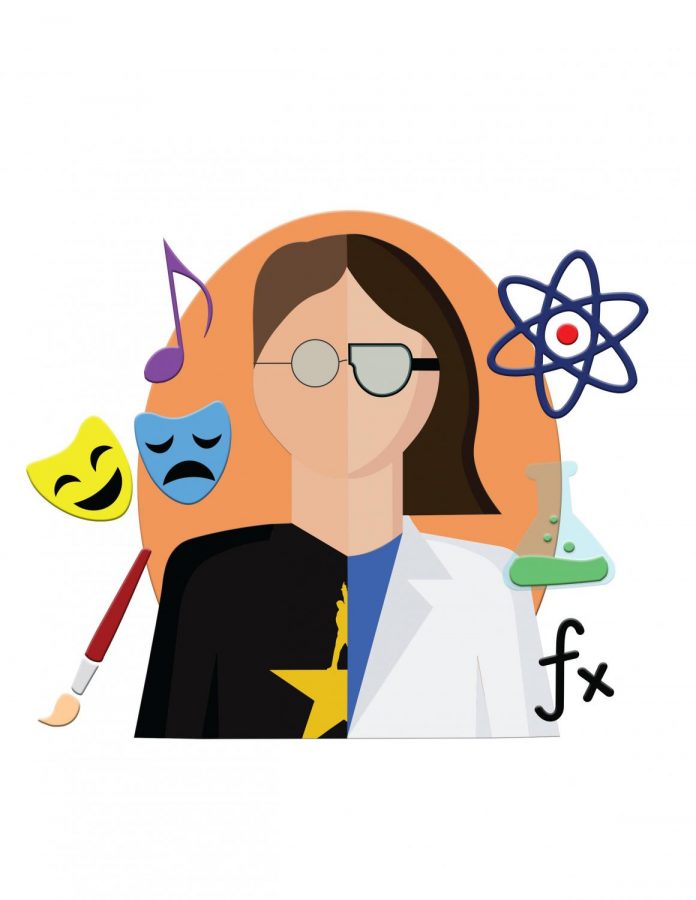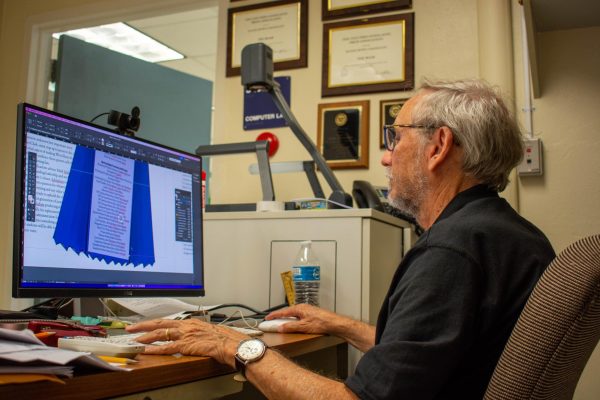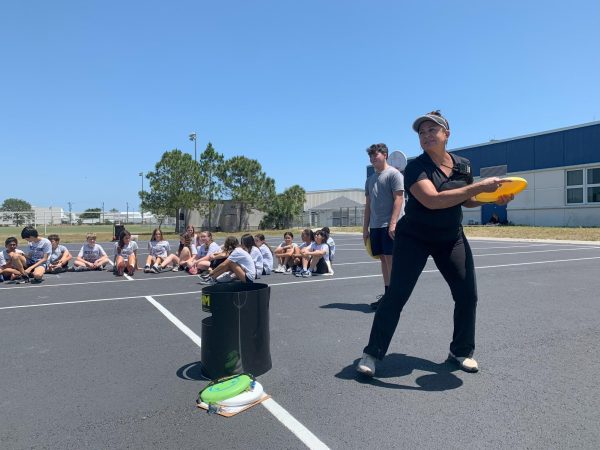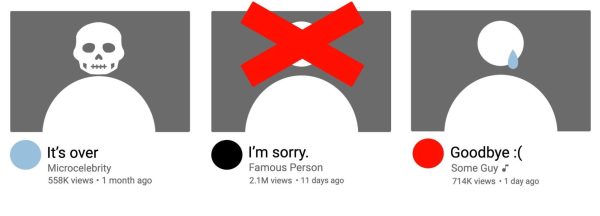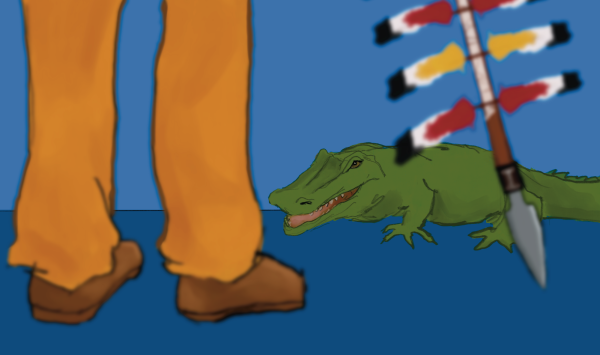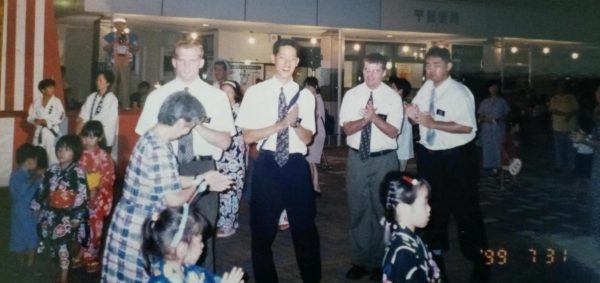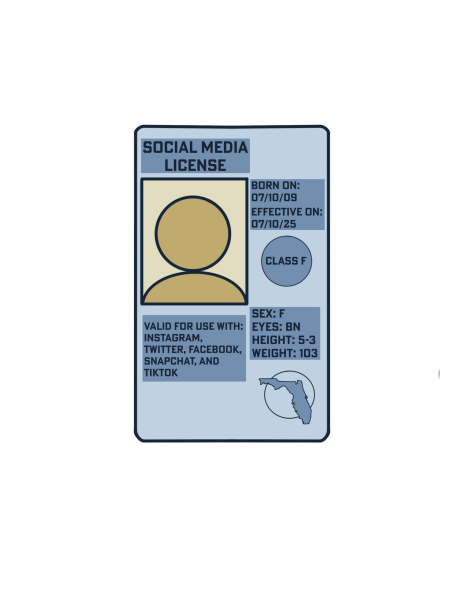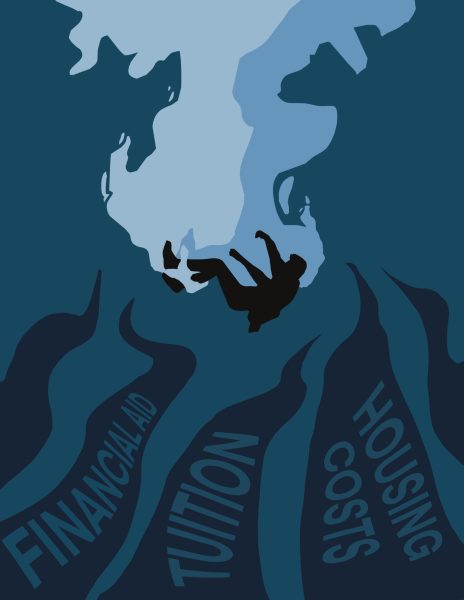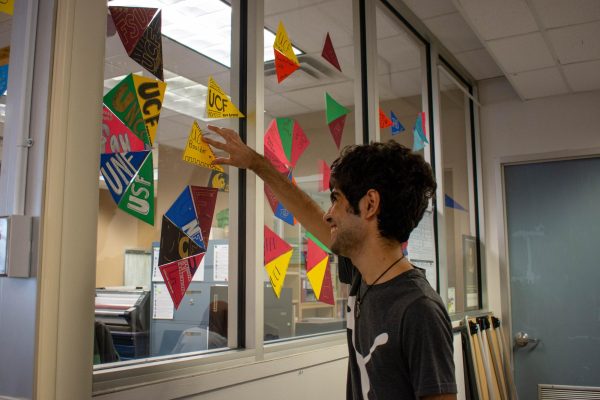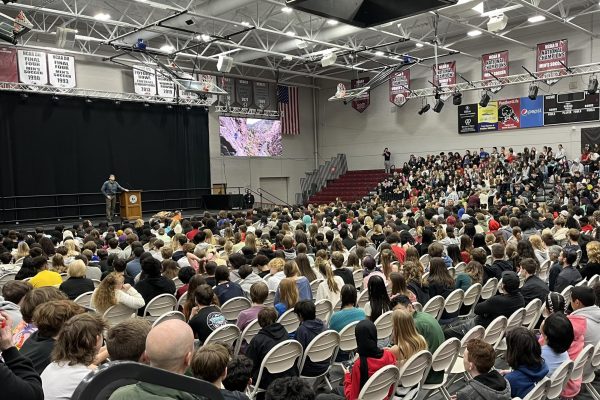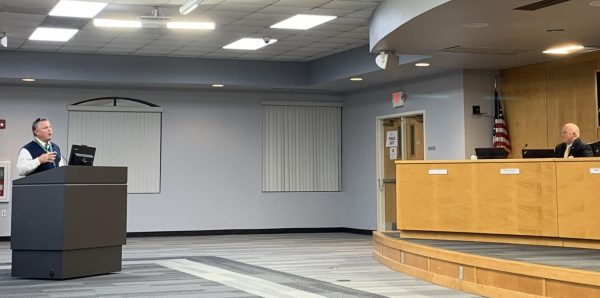State of the arts
Struggle between STEM and arts continue
Senior Abby Goodman tightens her strings, rosins her bow and begins to play her violin. As she plays, her muscles relax and she is able to forget the world around her — a world that, according to her, is overly focused on STEM-based logic and reasoning.
“I plan on going into music education, probably at UCF,” Goodman said. “I have always loved music and found so much enjoyment in it and in improving my skills.”
She said she found inspiration in her first violin teacher, Erik Bryan, director of Orchestras at Eau Gallie High and Johnson Middle School.
“I really connected with the way he teaches, but I didn’t realize that was something I could do myself until like ninth grade,” she said. “I used to want to be an engineer or something like that, sort of taking inspiration from my family. My dad does repairs on airplanes and my mom has family that works at NASA. But it got to a point where I finally realized I didn’t want to do that forever. I’ve been playing violin for 11 years and I really threw myself into it once I realized it could be a career.”
Goodman has played violin at school since seventh grade and has since seen the number of orchestra classes shrink from five to two.
“It’s really disheartening,” she said. “I think there’s something really sad about seeing a program you love so much go so far downhill. Currently there’s only two orchestra classes, one for beginners and one for everyone else. That creates a really big disparity in that more advanced class. I’m probably the best strings player here, so I basically just sight read every day. There’s just not that much at my level that the majority of people in the class can play.”
For her senior project, Goodman built a cigar box violin. She said that while pursuing this goal, she had trouble finding aid on campus.
“I think it’s disappointing how West Shore handles arts classes,” she said. “I understand that we are a STEM-based school, but there’s also so much to be gained from the fine and performing arts. If you are a kid who really cares about math and science, you have all these AP classes and clubs you can participate in. If you’re an arts kid, you have only a few classes and APs, and even less opportunities for clubs. It’s really sad how little support certain programs get, especially stuff like the literary magazine, chorus and orchestra.”
Despite these frustrations, Goodman said she sees the necessity of the arts.
“It’s sad because music has so much potential to help people,” Goodman said. “Beyond just teaching and private lessons, there’s so much practical purpose with stuff like music production and music therapy, but all of that is ignored. The arts have definitely gotten the short end of the stick.”
Goodman said she has spent the last year implementing the Tri-M Music Honor Society, for which she said she plans to run for president.
“That whole process was really sad, too,” Goodman said. “Once it’s up and running, this will be the first time we’ve had a Music Honor Society at all. It’s a step in the right direction, for sure, but it’s frustrating when it takes this long to do something so simple. Every STEM kid has multiple opportunities for honor societies without having to try at all. Like, I understand the reason for math, but does it give me purpose? I don’t think so.”
This isn’t the case for everyone, however. Kaitlin Inganna, who graduated from West Shore in 2015 said she found enough fulfillment in STEM to make it a career.
“I’ve wanted to be an engineer since the third grade because I wanted to work with my hands,” Inganna said. “The thing that enticed me about engineering is that it gave me an opportunity to work with my hands and understand the world around me.”
Inganna graduated from the University of Florida in 2019, and currently lives in Connecticut working for Pratt & Whitney, an aerospace engineering firm that specializes in military aviation.
“I became a materials engineer with a certificate in metallurgy,” she said. “On the front end of production, my field looks at the effects of varying processes on metals to achieve certain properties. On the back end of production, we look at failed materials to understand what drove the failure and how to help design the next generation to last longer and be more robust in the field.”
Inganna said she never considered liberal arts as a potential career path.
“I just discovered my dream career at such a young age,” Inganna said. “The field of engineering was introduced to me at a young age through a women in engineering workshop,” she said. “They demo different fields using kid friendly activities and that really encouraged me to pursue STEM. While at West Shore, I was able to take AP [chemistry] with [Delilah] Narvaez, and she inspired me to want to learn more about it.. Materials engineering specifically was interesting to me because it’s a good marriage between hands on and pure chemistry.”
This creativity led Inganna to pursue arts based competitions instead of only STEM, earning her first place in the Space Coast Art Fair in 2013.
“[Digital arts teacher Jim] Finch used to tell me that graphic design would help me in my career in more ways than just making art,” Inganna said. “When I was in high school, I never believed him. Since going through college and entering industry I can see that he was right. I received chair positions in college clubs and it helps me create presentations for work that are impactful and display information in a digestible way. As a hobby, photography and graphic design also help me relax and escape the logic-based world of engineering.”
Inganna said she was encouraged to enter the arts for the first time while attending West Shore.
“I never felt any pressure from West Shore to go into STEM. I was actually talked out of taking advanced math and science when I was an incoming freshman. I think if anything, West Shore opened my eyes to a new type of art and helped grow my creative thinking.”
Despite this, Inganna said STEM was still the obvious choice for her.
“I never actually considered myself an artist until I took graphic design with Mr. Finch,” she said. “He encouraged me to pursue my creative side and stick with photography and graphic design, so it’s thanks to his encouragement and dedication that I was able to convince my parents that it was worthwhile to take all the way through AP.”
Finch said this encouragement can be vital to getting students interested in the liberal arts.
“It’s really hard,” Finch said. “West Shore kids can be so focused on science and math that they completely lose sight of, or don’t even see, the value of the arts.”
Finch has taught at West Shore for 19 years, and during that time has jump-started the AP Digital Arts program and expanded the programs taught in class to include Adobe Photoshop, Illustrator, Image Ready, PowerPoint, Bryce, Poser, Flash, Dream Weaver, Sketch Up and Blender.
“The arts provide so much fulfillment in life,” he said. “And they’re everywhere. Every industry needs artists, every product has a designer behind it. There’s no job in the world where having design experience won’t make you more marketable. And more than that, there’s so much joy that comes from it. I just want to teach kids about how important art is, and how much it can affect your life.”
Finch said this goes beyond just career success, as well.
“Art does more than what people recognize,” he said. “You start to notice things in the world around you that you wouldn’t otherwise. You notice and appreciate good design on products, and buildings, and stuff like that. More than that, there’s such a mental health improvement to the liberal arts. Being able to sit down and relax can help with depression, anxiety, and stuff like that. And even more than that, there’s such a sense of purpose that can come out of the arts. It’s something that’s not inherently tied to critical thought, and I think people can find a lot of joy in that. I am a firm believer that everyone can become a happier person, and I think that makes art one of the most important things in the world.”
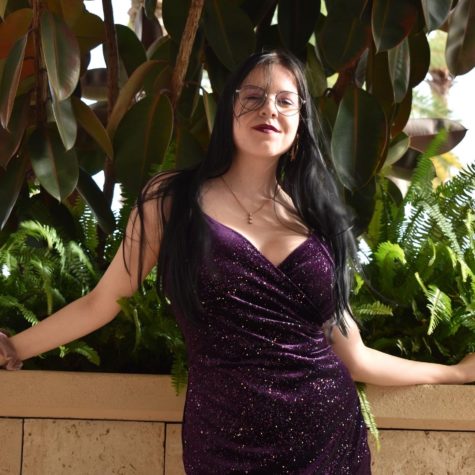
Hi, my name is McKenna Slaughter. This is my third year on staff and I am this year's editor in chief. I am thrilled to be a part of this staff while working...

